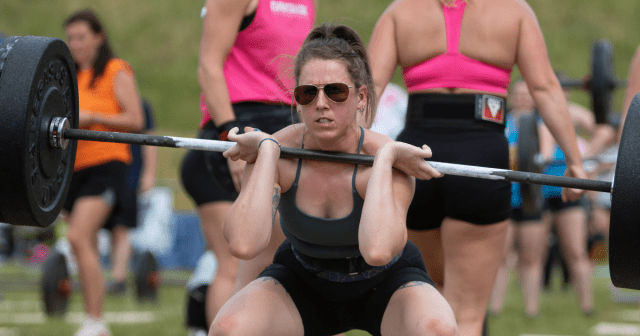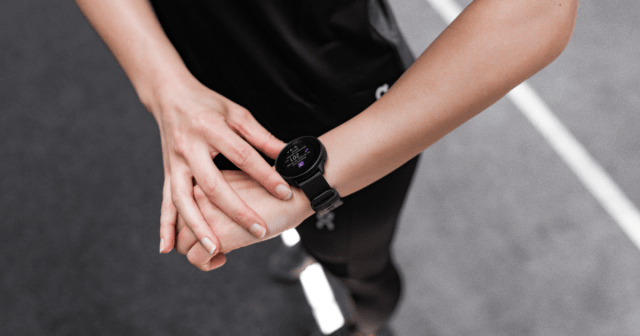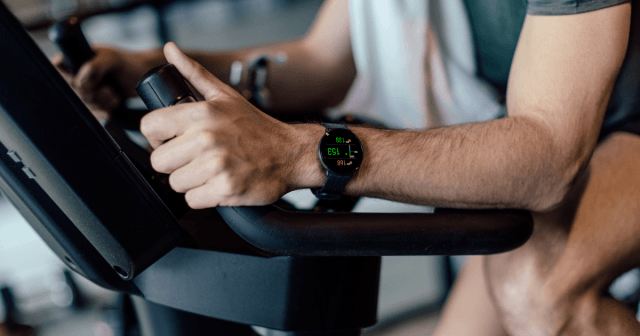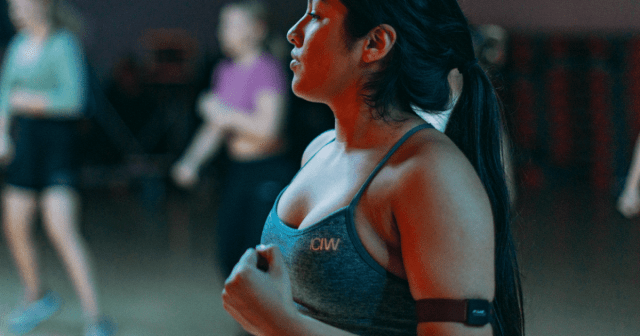In football, there’s one number that genuinely matters: who scores more goals. Off the pitch, however, data analysis and player tracking are becoming commonplace to understand players’ performance, optimize training, and prevent injury.
Both big teams from top European footballs leagues and smaller teams are using player tracking tools to pinpoint the exact position of players on the pitch, their heart rate, and how fast players run and sprint. Such analysis has a tremendous impact on coaching and informs training plans and starting lineups.
We asked Tanya Bröring, sports scientist at Ajax Women football team, how the team uses player tracking and performance data to monitor progress, determine the load of training session, and adjust the team’s training plans to prevent injury.
How do you use player tracking technology to improve the overall performance of the team?
In fact, we monitor everything. Not just training on the pitch and matches, but also indoor training sessions and recovery. On the pitch, in particular, we follow heart rate zones, the total run distance, the various speed zones, and how many sprints each player does and at what speed. This way, we get a daily overview of how players are training and their readiness for upcoming matches, making sure they’re not overtraining to minimize the risk of injury.
How player tracking works
Tracking a football player’s activity on the pitch isn’t much different than tracking a runner during a marathon. In fact, player and performance tracking is hugely beneficial in any kind of team sports.
With an athlete tracking tool like Polar Team Pro, players only need to wear a tiny motion sensor that live broadcasts their activity, including heart rate, speed, distance, running cadence, and other advanced metrics such as accelerations, number of maximum sprints, and distance on dedicated speed zones. Indoors and outdoors, Polar Team Pro maps athlete performance in real time and afterwards.
With an athlete tracking tool like Polar Team Pro, players only need to wear a tiny motion sensor that live broadcasts their activity, including heart rate, speed, distance, running cadence, and other advanced metrics such as accelerations, number of maximum sprints, and distance on dedicated speed zones.
When practice is over, coaches can see how players moved on the pitch with accurate GPS positioning information and analyze all the collected metrics. Such thorough player tracking helps coaches optimize workouts and drills to improve overall performance while preventing injuries and fatigue.
For Tanya Bröring, sports scientist at Ajax Women football team, both GPS positioning and heart rate data are essential to track a football’s player performance.
When it comes to a monitoring a football player’s performance, what’s your focus, GPS data or heart rate monitoring?
Both! We mostly focus on GPS data, though. Of course, we also check the heart rates, especially when we do certain workouts like the HIMS test, a kind of interval shuttle run. There are four blocks that the participants must run at a certain speed. During this test, heart rate is continuously monitored, including recovery values after one minute. Heart rate data does play a crucial role here because it allows us to assess the recovery of the players. We perform this test every third day after a match – it’s usually a weekly thing.
One important aspect is that we can also gather this data indoors. The built-in accelerometer tells us speed, distances, acceleration, so we always have this information even when we’re not on the pitch.
Data analysis As A Tool For Injury Prevention
Once the player tracking data is gathered, the algorithms take over and translate the raw data into meaningful insights that provide a window in a player’s current physical condition. Features like Cardio Load, Muscle Load, and Training Load Pro monitor the intensity and strain of each session to provide detailed performance and recovery metrics. After each session, players can also include their rate of perceived exertion (REP) score to add a subjective measure of their training day intensity and make this information available to their coaches.
Thanks to this information, coaches and managers can see each player’s long-term progress, adjust intensity to prevent injury, or decide when to bench a player to give them some rest.
Your players need to record certain training load before they are ready for a match, is that correct?
Yes, and that includes training sessions. From the one-on-one training to the match. We try to get our players group fit and then match fit. So, yes, data in this situation come in handy. Of course, there are other tests, such as jump tests. This is information is important to minimize the chance of recurring injuries.
This ties in with the following question: do you use data to predict the risk of injury?
Yes, we look at the data at all times. For example, we continuously monitor the distances covered at high speed (above 21 km/h) and high intensity runs between 17 and 21 km/h. We look at how players performed in the past four weeks and the last week. That ratio is very important.
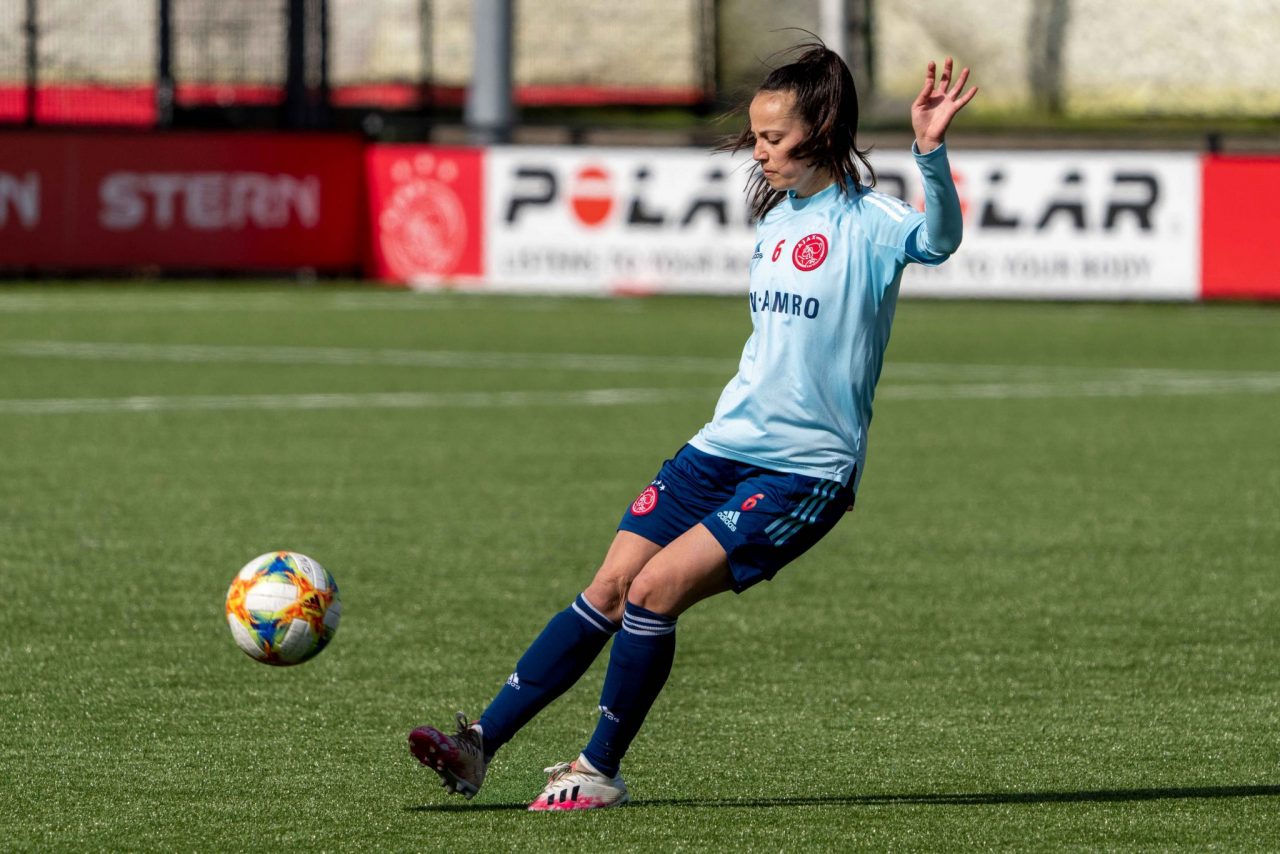
And, will you collect information with subjective feeling (RPE value)?
We ask the players to indicate their RPE value after each training session. By planning and checking the weekly and daily load, we want to prevent overtraining and underperforming situations. The goal is not only injury prevention, but also making players as fit and resilient as possible.
Suppose you notice that a player shows a risk of injury, do you actively adjust her training based on that data?
Certainly, but we also consider other factors such as sleep and private circumstances. Or simply, one day a player doesn’t feel well – after all, a player is more than just data. Quality information is also very important. Based on several questionnaires, we also assess muscle stiffness, general feeling, recovery, sleep, and we attach the necessary importance to the RPE values. Players also might use a Polar device to monitor their sleep quality and make this data available to coaches via Polar Team Pro, too. When we know this information, a player will receive an individually adapted program, if necessary. Feeling good? Doing too little? Add some extra running time.
Based on several questionnaires, we also assess muscle stiffness, general feeling, recovery, sleep, and we attach the necessary importance to the RPE values. Players also might use a Polar device to monitor their sleep quality and make this data available to coaches via Polar Team Pro, too.
Tanya Bröring, sports scientist at Ajax Women football team
Do you also use the technology to bring players back sooner after injury?
Definitely. It’s faster, and we use the data we collect via tracking to understand whether players are ready or what they’re still lacking. For example, we might know that a player needs 2,000 high-intensity runs before they’re match ready, so we make sure they’ve done that in training before we clear them to play a match.
If you have to tell a player on the basis of the data that it is better not to train or play, what is their response?
This does not happen often, It usually involves small adjustments within the training plan, so if it is properly explained, the players understand the situation. In the beginning, players had more doubts about the data, but now they are the first ones to ask how they are doing. They easily understand the choices we make.
Player tracking supplements traditional training tactics
Performance data and player tracking alone hold small value if they aren’t part of a systematic training plan. At Ajax Women, staff and coaches combine performance data with the players’ own perceived exertion.
The science and technology of Team Pro is one thing, but what things do you still use at Ajax to take care of the players and keep them in shape?
Nutrition is essential. After each session, the players have a well-balanced meal at the club. And, of course, we also provide adequate snacks and before and after the match. We take recovery shakes after every match or tough training session. In addition to the nutritionist, there is a whole staff around the players. There are two physios, a performance training, a doctor… There’s an entire team that guides the players.
Player and athlete tracking with Polar Team Pro
Designed for professional team sports, Polar Team Pro combines high-precision GPS-derived movement data, inertial sensor metrics and integrated heart rate monitoring into a mobile and easy-to-use wearable player tracking system. The sensor collects performance data indoors and outdoors, and an app provides real-time training data, player comparison, training summaries and performance insights right after a training session.
If you want to see Polar Team Pro in action, don’t hesitate to reach out and request more information.
If you liked this post, don’t forget to share so that others can find it, too.
Or give it a thumbs up!
I like this article
Please note that the information provided in the Polar Blog articles cannot replace individual advice from health professionals. Please consult your physician before starting a new fitness program.

